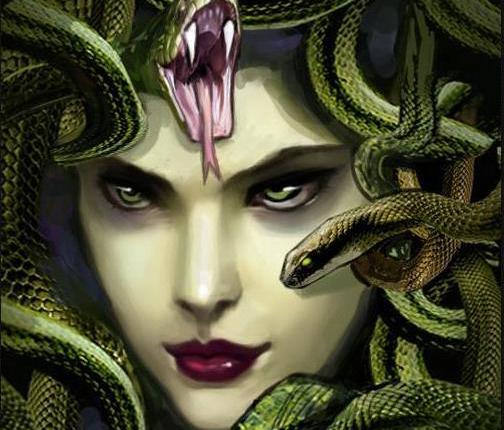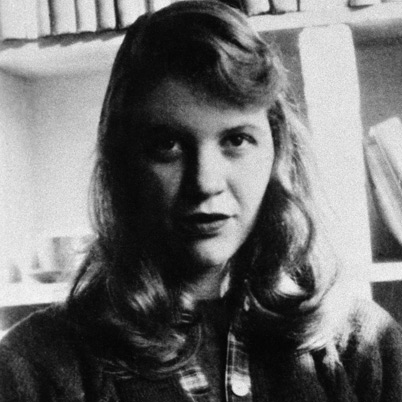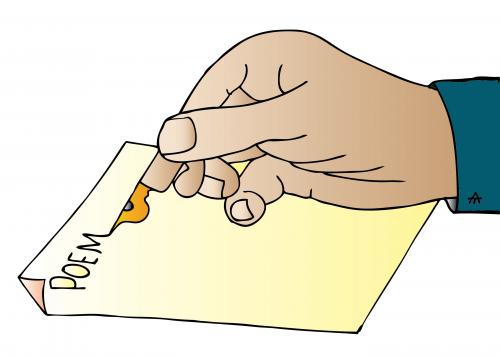The poem The Disquieting Muses written in 1957 serves as a good example of alienation. The poem depicts a non-communicative mother-daughter relationship. Plath wrote this poem getting highly inspired by Giorgio de Chirico eponymous painting. The poem has deep resemblance to the picture and the three Muses of Chirico’s painting are depicted by Plath in different light.
In the painting, far from being alive, the three muses are portrayed as hallucinatory, featureless sterile mannequins. The colors used make them un-human instead of inducing vibrancy and life in them. The shadows of unseen setting sun, the faraway castle, geometric objects etc creates a sinister, disturbing setting. The Muses are placed in a haunting atmosphere, being stripped away of meanings, giving them a surreal existence. Plath takes away this Muses and represents them as dark forces of Nature in her poem.
The Muses are no longer attached to their mythical qualities of influencing artistic qualities in human instead the mannequins of Chirico becomes bad fairies and evil mothers in Plath poetry. The Muses are seen in their usual function of guiding the human, the speaker’s patron but instead of giving good advice they fill the speaker with sinister fore boarding and negativity. This trio is similar to the three Witches of Shakespeare’s Macbeth who represents the sinister trio of twentieth century women imparting evil gifts. In the presence of these Muses are symbolic to the tewentieth century parents who are unable to give their children a comforting environment for growing up instead hoards them with darkness. Their presence in the child’s life makes her aware of the presence of the two contrasting world. And portrays how she finally succumbs into the negative one with her godmothers leaving the good world behind.
The disquieting Muses is addressed to the mother. It opens with a stanza where the speaker blames her mother for bringing her up with the sinister elements from early infancy. While the five negative prefixes “illbred,” “disfigured,” “unsightly,” “unwisely” and “Unasked” demonstrate negative elements, the repetitive stress on “Mother” indicates the speaker’s anger and accusations against the mother figure. The caring Mother is replaced by haughty godmother like characters.
The speaker goes on to portrays in the second stanza the idealistic world of a child that the mother is supposed to establish for the children. The ideal mother creates an environment full of superheroes where evil is absent or can be easily defeated. However in the presence of this sinister Muses the child becomes powerless and cant not drive away the evil and rather becomes associated with them. Furthermore the bedtime stories in this stanza refers to and are centered on Plath’s younger brother, Warren’s favorite teddy bear, “The Adventures of Mixie Blackshort,” which she created, and which ran periodically for several years.
The hurricane episode of the third stanza symbolically shows the rapture of parental guidance and protective shield. It can be interpreted as the failure of the parents to keep the child safe in the presence of the Muses which continue to do mischief conforming their ever presence in the child’s life. The Thor song is also autobiographical s it relates to Plath’s father who used to teach them the song of Thor.
The final stanzas elaborate the child’s failure to be like her mother and her divergence from the virtuous path. The failure of dancing and piano refers how the Muses could detach the child from her mother making her one of them. The shows how cold lifeless and shadowy the child has become.
The poem is written in Nursery rhyme format which is juxtaposed with a conversational, linear tone. It has eight-line stanzas which roughly contains four stresses in each line. The repetition of various sounds creates beautiful assonance with also expresses the mood, tone and emotion of the speaker. The poem uses an interesting set of vocabulary depicting the two sides: the alarming Mother and the cynic Muses.
Phrases like Mixie Blackshort the heroic bear, gingerbread, bubbles, cookies and Ovaltine, fireflies, glowworm, twinkle-dress, balloon, flowers and bluebirds, soap-bubble etc mark sharp contrast with the other set where phrases like darning-eggs, mouthless, eyeless, stitched bald head, shadow, heavy-footed, dismal-headed, tone-deaf, gowns of stone, blank faces, and the setting sun. The word “Mother” has been repeated nine times, these repetitions echoes the overtones stanzas hey are used in. it carries the intense eagerness to draw her mother’s attention, at other places it refers to a sarcastic, mocking tone.
The poem is full of autobiographical overtones; various episodes are directly taken from Plath’s childhood. Like in her other poems related to parents and parenthood, here also she blames them for her situation. The failure of parents to arrange for a peaceful and healthy childhood which the speaker complains can be seen as direct complain of Plath for her present traumatic survival.
To conclude the poem, the poet indicates that the speaker in the poem is surrounded by other-worldly beings who accompany her. Plath creates a surreal environment where the mother is powerless in front of the distorted sinister Muses. This witches who belongs to the world of madness slowly engulfs the child making her of them. Similarly, the child also learns her differences and submits to their will becoming one with the beings of the world of madness.
Some online learning platforms provide certifications, while others are designed to simply grow your skills in your personal and professional life. Including Masterclass and Coursera, here are our recommendations for the best online learning platforms you can sign up for today.
The 7 Best Online Learning Platforms of 2022
- Best Overall: Coursera
- Best for Niche Topics: Udemy
- Best for Creative Fields: Skillshare
- Best for Celebrity Lessons: MasterClass
- Best for STEM: EdX
- Best for Career Building: Udacity
- Best for Data Learning: Pluralsight














